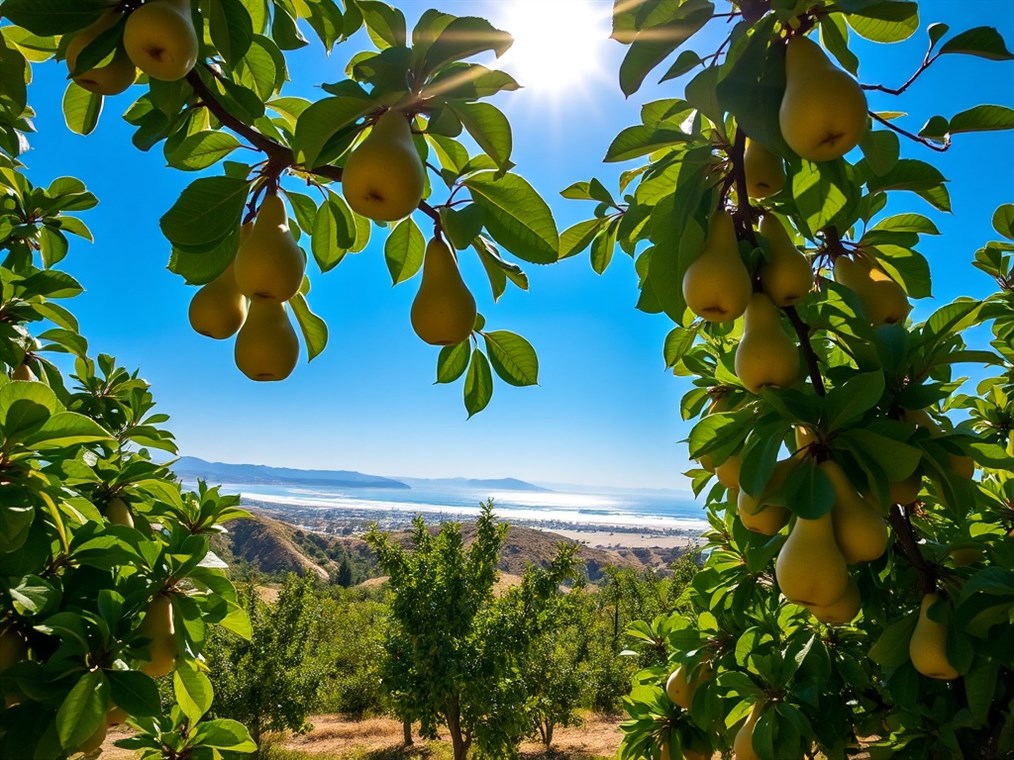Pears in Southern California: Surprisingly Possible!
Okay, Southern California. Sunshine, beaches, and…pears? You might be scratching your head. We all know SoCal for its oranges and avocados, but pears? It sounds a bit out there, right? Well, here’s a fun fact: growing pears in Southern California is actually a thing, and it’s becoming more and more popular. Who knew?
The secret? It all boils down to something called “chill hours.” Think of it like this: pear trees, like a lot of fruit trees, need a good, long winter’s nap to get ready to produce fruit. These “chill hours” are basically the number of hours the temperature stays between 32°F and 45°F. Now, your typical pear tree wants at least 1,000 of these chilly hours – something Southern California just can’t deliver.
But hold on! Clever plant breeders have come to the rescue! They’ve developed special low-chill pear varieties. These guys only need 100-400 chill hours, making them perfect for our mild winters in USDA Zones 9 and 10 – which covers most of Southern California. Pretty neat, huh?
So, which pears are we talking about? Well, there are a few that do particularly well here. ‘Hood’ pears are a great choice; they only need a tiny bit of chill time, like 100-150 hours. Then there’s ‘Flordahome,’ another low-chill option that’s also resistant to fire blight – a real win-win! If you’re looking for something with a bit more crispness for canning, ‘Keiffer’ pears are a solid bet. And don’t forget ‘LeConte’ and ‘Pineapple’ pears – both delicious and surprisingly easy to grow.
Oh, and Asian pears? Those do well here, too! Varieties like ‘Shinseiki,’ ‘Hosui,’ and ’20th Century’ are all worth checking out. I’ve heard the ’20th Century’ is especially tough, handling both cold and drought like a champ – perfect for our sometimes unpredictable weather.
Now, I’ve seen some debate about ‘Bartlett’ pears. Some say they’re a no-go for Southern California, but others swear they’re the most common type grown in the whole state! Go figure. If you’re in a slightly cooler part of SoCal, you might want to try a ‘Moonglow’ pear instead – it’s supposed to be a good ‘Bartlett’ substitute.
Alright, so you’re thinking about planting a pear tree. What do you need to know? First off, sunshine is key. Your pear tree needs at least 6-8 hours of direct sunlight every day. Also, make sure you have well-draining soil with a pH that’s not too acidic or alkaline. Think Goldilocks – you want it just right! I always mix in some compost to give my trees a little extra boost.
Watering is also important. Pear trees can be thirsty, especially in the late spring and summer. And, of course, keep an eye on the temperature. Low-chill varieties can handle our warm winters, but you still want to avoid planting in areas that get hit hard by frost.
One last thing: pollination. Some pear trees need a buddy to produce fruit. So, you might need to plant two different varieties near each other to get the best results.
Now, it’s not all sunshine and roses. There are a few challenges to watch out for. Fire blight, that pesky bacterial disease, can be a real problem. So, choose resistant varieties and make sure your trees have good air circulation. Pests, like pear psylla, can also be a pain. And, of course, we can’t forget about climate change. It’s hard to say exactly how it will affect pear growing in the future, but it’s something to keep in mind.
So, there you have it! Growing pears in Southern California is totally doable. With the right variety and a little bit of care, you can be enjoying your own homegrown pears in no time. How cool is that?

